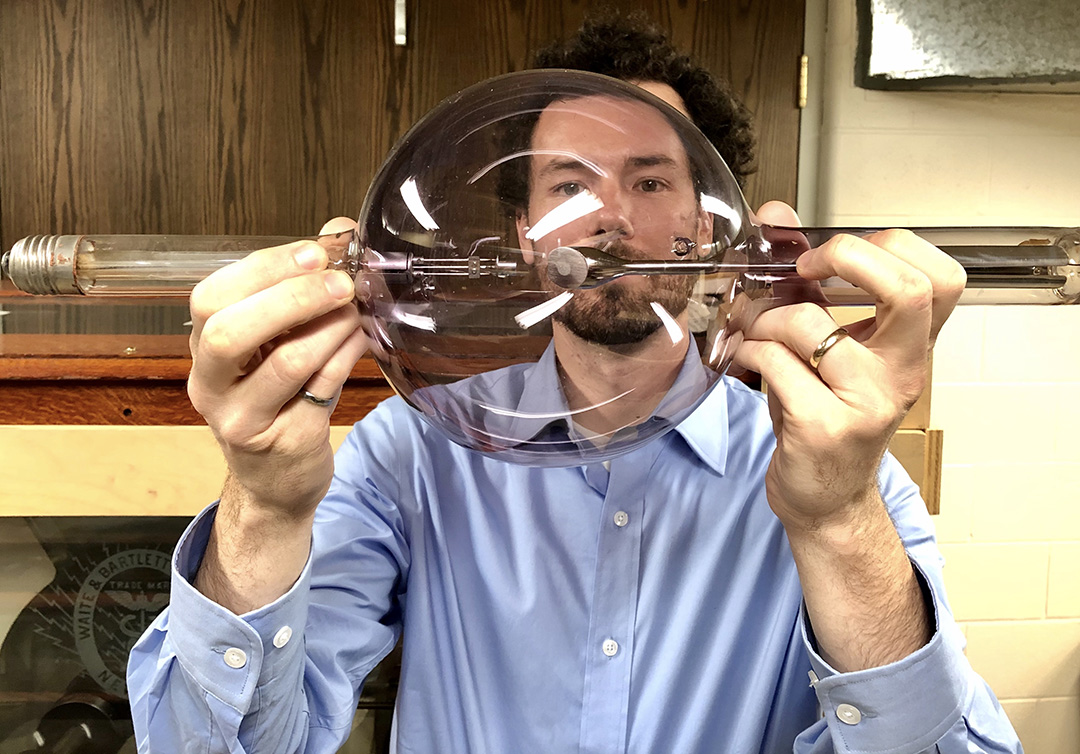Uniquely USask: Western Canada's first X-ray machine
A turn-of-the-century medical marvel and prized piece of the province’s health-care history sits quietly tucked away in the corner of a storeroom in the basement of the Physics Building at the University of Saskatchewan (USask).
By James ShewagaThe physics department is home to the first X-ray machine in Western Canada.
The university is home to the first piece of medical X-ray imaging equipment in Western Canada, brought to Saskatoon by Dr. Herbert Weaver (MD) back in 1906, just one year after Saskatchewan became a province. In a room filled with an array of antique artifacts, rudimentary relics and specialized scientific instruments, the early X-ray unit—a Ranney-Wimshurst-Holtz Static machine—is the prized piece of a collection lost in time.

“It’s incredible to see a piece like this,” said Dr. Mark Wurtz (PhD), who earned his bachelor’s and master’s at USask and now serves as an instructional assistant in the Department of Physics and Engineering Physics. “It was state-of-the-art medical technology at that time and this was the first one in Western Canada. It’s a valuable part of Saskatchewan’s history and the history of Western Canada.”
The early imaging machine was first used by Weaver just five years after the discovery of X-rays by German physicist Wilhelm Rontgen, who earned the first Nobel Prize in physics in 1901. The unit was operated by hand crank and generated up to 800,000 volts, but also produced dangerous after-effects. The machine required exposing patients for more than a minute in order to create the X-ray image, which resulted in excessive amounts of radiation for early users who were not aware of the health hazards.
“The operators would be exposed to X-rays, but at the time, they didn’t know how dangerous it was,” said Wurtz. “So, the operators would often get sick and some even died of cancer.”
Weaver himself had an index finger amputated due to radiation exposure. But while the early X-ray machines came with risks, they also opened the door to a whole new world of medical diagnosis.
“You can see how they took the basic concepts that we still learn in physics today, and used them with this machine,” said Wurtz. “When we look at old hand-crank machines like this, we can see how basic principles of physics were used to perform a basic task. The fact that it still works to this day is a testament to how well it was built, and how basic the mechanism is, but also how basic concepts of physics were applicable.”

